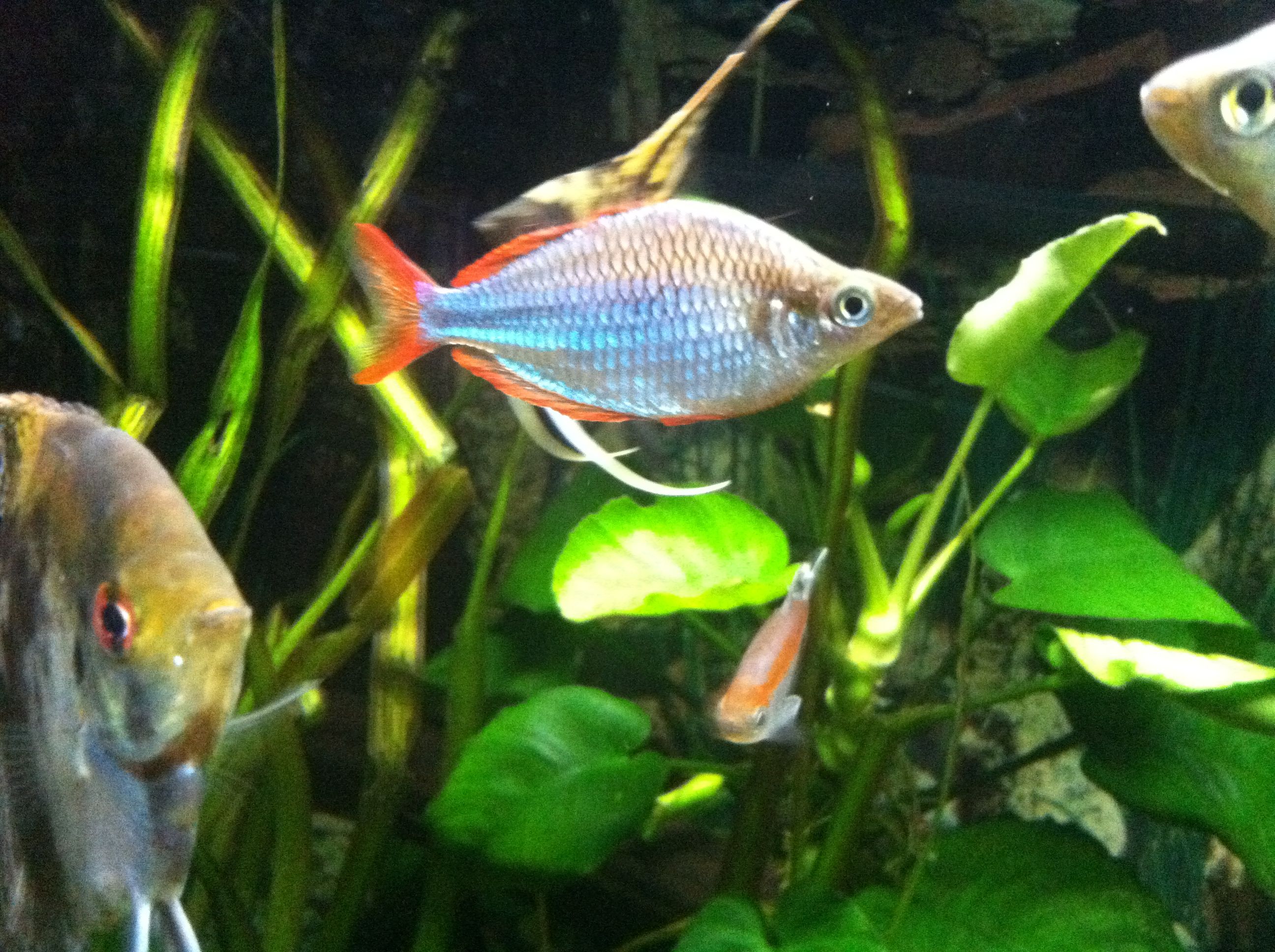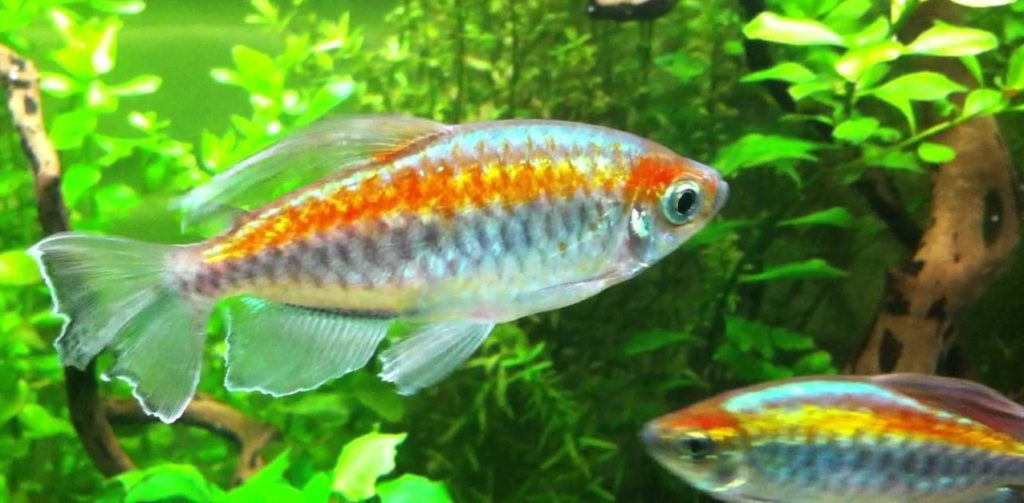The Congo Tetras (Phenacogrammus interruptus) belong to the species of tetra fish and are endemic to the Congo River (Africa). If you want to have a really striking aquarium as well as learning about all tetra fish don’t miss this chance
Congo tetras are very popular in the aquarium trade, they are passive if they are inside a school, but this can change when they are inside an aquarium.
Table Of Content
The Congo Tetras’ Main Characteristics
The body of this species is elongated and laterally flattened. Like other tetras fish the Congo tetras have a second adipose dorsal. Their eyes are proportionally large in relation to the head. The male’s dorsal fin is very long and usually extends to the end of the tail.
Size
The length of the body reaches 9-8.5 cm in males, while females are smaller (up to 6 cm).
Body Color
The Congo tetras’ coloration is very variable and usually changes with light, since they have iridescent scales. In general, they have a bluish green coloration, the ventral zone being of silver color and the golden yellow head. Males have a golden line along their body, from the head (behind the eyes) to the caudal peduncle. The dorsal, pelvic, anal and caudal fins are gray with clear edges.
Natural Habitat
They are native to Africa, especially in the basin of the Congo River. They inhabit bodies of water with abundant vegetation as well as slightly acid and calm waters, with similar conditions to the environments inhabited by South American tetras.
What Do Congo Tetras Feed On?
The Congo tetras are omnivores creatures that require a varied and abundant diet several times a day. In their natural habitat they feed on small worms, insects, crustaceans, algae and zooplankton. In captivity, their diet should consist of live or frozen food, to keep them with better coloration.
Behavior
The congo tetras are active, peaceful and sun-loving fish. They are extremely shy and therefore it isn’t advisable to leave them in an exposed aquarium, but provide them with trunks or plants where they can hide.
Congo Tetras and other Fish Species
In general, they are fish that can be kept in community aquariums, but they can often bite or injure smaller fish. These fish should be kept in schools of 8 -10 specimens and can coexist with other species of fish that are not very aggressive and that have similar water and temperature requirements, even if they don’t come from the same biotope.
Also, as they occupy the middle levels, they combine very well with African river cichlids that move mainly at the lower levels. If they are not comfortable in their habitat, they will remain hidden among the vegetation of the aquarium.
Congo Tetras’ Reproduction
Congo tetras are oviparous fish. They are difficult to reproduce in captivity conditions, since they need aquariums bigger than 60 liters, (ideally 100 liters). It is possible to spawn several couples together in a 200 l tank, preferably with a proportion of males somewhat larger than that of females.
It is advisable not to place substrate and decorate with plants fixed with stones. Moreover, keep in mind that the presence of carbonates in the water affects the development of embryos and fry. On the other hand, increasing the lighting and a diet rich in live food is very useful to promote spawn.
The females are prolific and generally lay the eggs among the plants. The eggs hatch after 6 days at a temperature of 26 ° C and must be separated from the parents by a mesh, since they are sometimes cannibals. The fry at hatching are already able to swim freely in search of food. They can be fed freshly hatched Artemia nauplii.
The optimum pH would be 6.5.
Life Expectancy
The life expectancy of this species in captivity is 5 years.
Sexual Differences – Sexual Dimorphism
The females are smaller, brown and lack the golden line that is usually present in the males. On the other hand, males’ caudal fin presents the central rays in the form of filaments and the dorsal fin is more developed.
Appropriate Aquarium – Maintenance in Aquarius
They require an aquarium greater than 120 liters, with plenty of space to swim (for example around 80 cm in length). It must have vegetation on its edges, with areas of light and shade.
It’s very advisable to employ a dim lighting as well as dark substrate, so your pet’s stunning coloration will be highlighted. In addition the water filter must be powerful, as to generate currents. Water changes should be made in small volumes, and not as frequent.
here they are








